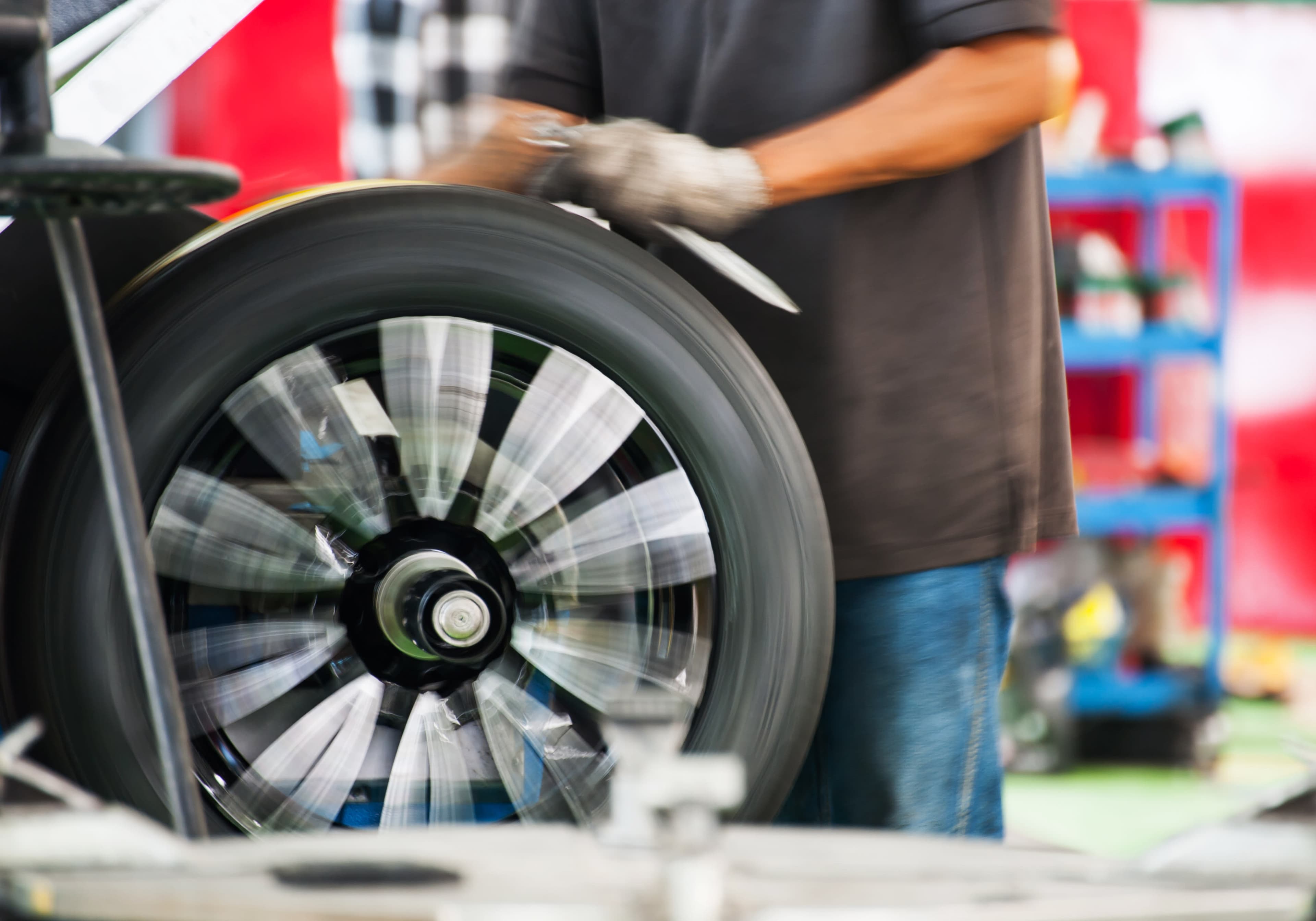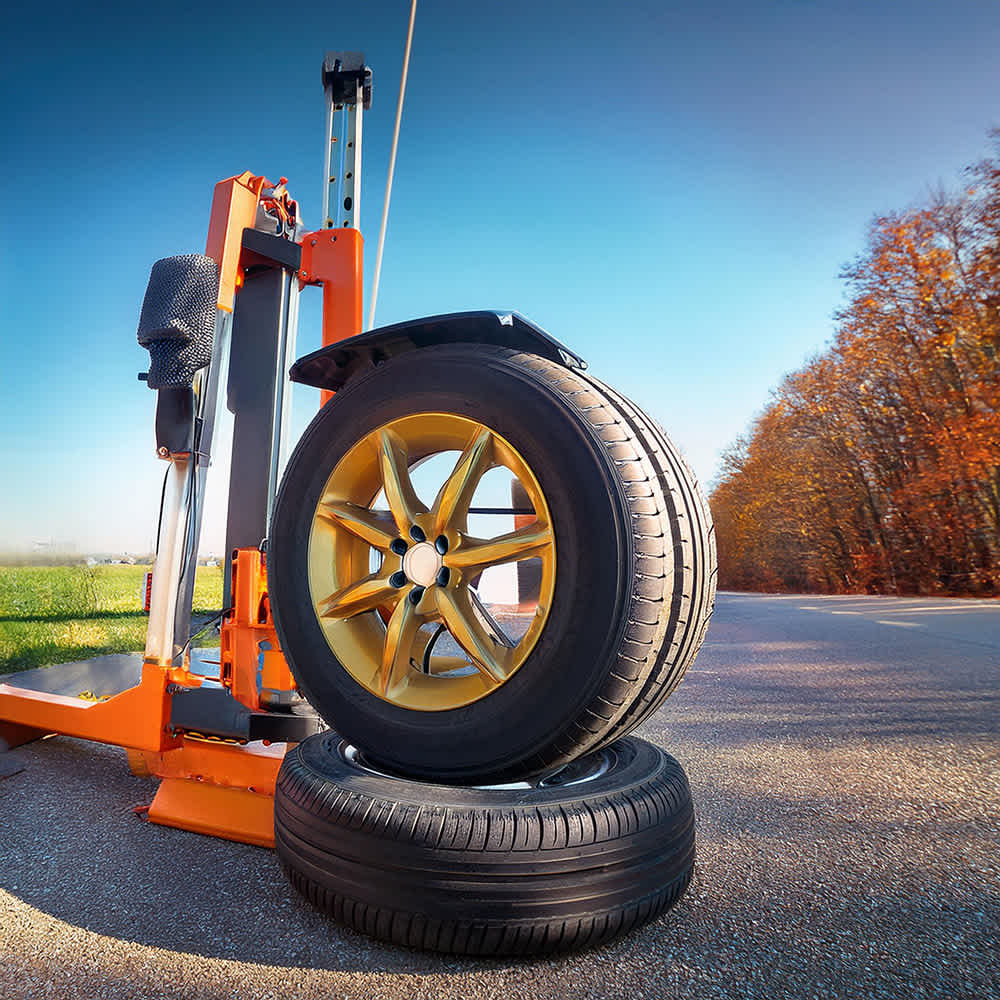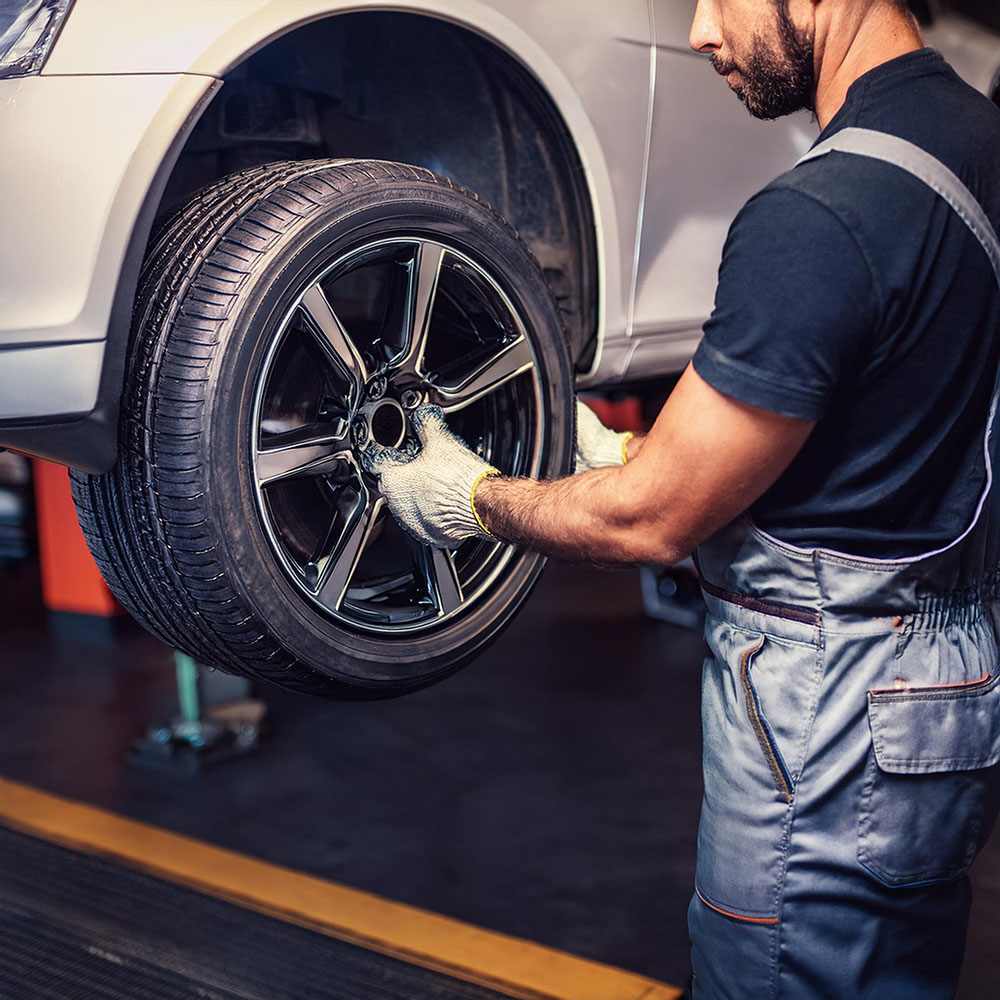Tire Maintenance & Safety
How Often Should You Balance Your Tires? Expert Advice

Free shipping
Best price guarantee
Special pricing
Financing with Resolve
Easy returns
Tire Maintenance & Safety

Tires are the unsung heroes of our vehicles, quietly carrying us to our destinations day after day. However, like any hardworking component, they require regular maintenance to ensure optimal performance and longevity. One vital aspect of tire maintenance that often goes overlooked is tire balancing.
Properly balanced tires are essential for a smooth, comfortable ride and even tire wear. Neglecting this important service can lead to a host of issues, from annoying vibrations to decreased fuel efficiency and reduced tire life.
In this article, we'll dive into the world of tire balancing, exploring what it is, why it's important, and how often you should have it done to keep your vehicle running at its best. By the end, you'll have a clear understanding of this critical maintenance task and be equipped to make informed decisions about your tire care.
Tire balancing is the process of ensuring that the weight of a tire and wheel assembly is evenly distributed around its circumference. This is achieved by adding small weights to the wheel rim to counteract any heavy spots, allowing the tire to spin smoothly without vibration, There are two types of tire balance: static and dynamic. Static balance addresses the even distribution of weight around the tire when it is stationary. This is achieved by placing the tire and wheel assembly on a balancing machine, which identifies heavy spots and indicates where weights should be added.
Dynamic balance, on the other hand, corrects imbalances that occur when the tire is spinning. This type of balancing is more complex and requires a specialized machine that simulates road conditions. Dynamic balancing is essential for high-speed driving, as it eliminates vibrations that may not be detected during static balancing.
As tires wear down, their balance can change, requiring periodic rebalancing to maintain optimal performance. This is because the tread wears unevenly over time, causing the tire's weight distribution to shift. Additionally, older tires may be more susceptible to balance issues due to the cumulative effects of uneven wear and exposure to the elements.
The roads we drive on can also impact tire balance. Hitting potholes, curbs, or other obstacles can knock tires out of balance, leading to vibrations and uneven wear. Similarly, aggressive driving habits, such as hard cornering or rapid acceleration and braking, can cause tires to wear unevenly, affecting their balance over time.
To minimize the impact of these factors, it's essential to practice good driving habits and avoid road hazards whenever possible. Regular tire rotations can also help distribute wear more evenly, reducing the likelihood of balance issues.

There are several telltale signs that your tires may be out of balance:
If you suspect your tires may be unbalanced, there are a few steps you can take:
1. Visually inspect your tires for uneven wear patterns. If you notice any irregularities, it's time to have your tires balanced.
2. Feel for vibrations during a test drive, especially at highway speeds. If the vibrations persist after rotating your tires, balancing is likely necessary.
3. Have a professional technician assess your tire balance using specialized equipment. Many tire shops and service centers, such as SimpleTire, offer free balance checks as part of their tire services.
The recommended frequency for tire balancing varies depending on the vehicle manufacturer and the specific tire brand. As a general rule, most manufacturers recommend balancing your tires every 5,000 to 7,500 miles or as specified in your vehicle's owner's manual.
However, it's important to note that these are general guidelines, and your specific needs may vary based on factors such as your driving habits, road conditions, and tire type. If you frequently drive on rough roads or engage in high-performance driving, you may need to balance your tires more often.
Many experts recommend combining tire balancing with your regular tire rotation schedule. This approach saves time and ensures that your tires are always performing at their best. Tire rotations help distribute wear evenly across all four tires, extending their lifespan and improving overall performance.
By balancing your tires every time you rotate them (usually every 5,000 to 7,500 miles), you can address any imbalances that may have developed since the last service and keep your tires in optimal condition.

Tire balancing can be done manually using wheel weights or with the help of balancing machines.
During the balancing process, technicians use small weights to counterbalance any heavy spots on the wheel and tire assembly. These weights are typically made of lead, zinc, or coated steel and are attached to the inner or outer rim of the wheel, depending on the location of the imbalance.
The placement and amount of weight needed are determined by the balancing machine, which measures the tire and wheel assembly's weight distribution as it spins. The technician then carefully attaches the weights to the specified locations, ensuring a precise balance.
Modern tire balancing is performed using high-tech machines that can quickly and accurately detect imbalances in the tire and wheel assembly. These machines come in two main types: spin balancers and road force balancers.
Spin balancers are the most common type and are used for both static and dynamic balancing. The tire and wheel assembly are mounted on the machine and spun at high speeds to measure the weight distribution. The machine then calculates the placement and amount of weight needed to achieve a perfect balance.
Road force balancers, on the other hand, simulate the forces that a tire experiences while driving on the road. This type of machine applies pressure to the tire as it spins, mimicking the weight of the vehicle and detecting any irregularities in the tire's shape or construction that could cause vibrations or uneven wear.
While road force balancing is more advanced and can identify issues that traditional spin balancing might miss, it is also more expensive and not always necessary for everyday driving. Your tire professional can help you determine which type of balancing is best for your specific needs.
Tire balancing not only improves your tire’s tread life, it also improves fuel economy and enhances vehicle safety.
One of the most significant benefits of regular tire balancing is the potential to extend the life of your tires. When tires are properly balanced, they wear evenly across the tread, maximizing the tire's lifespan and saving you money on premature replacements.
Unbalanced tires, on the other hand, can develop uneven wear patterns, such as scalloping or cupping, which can significantly reduce the tire's tread life. By keeping your tires balanced, you can ensure that they wear evenly and last as long as possible.
Another advantage of balanced tires is improved fuel efficiency. When tires are unbalanced, they create additional rolling resistance, which means your vehicle's engine has to work harder to maintain speed. This increased resistance can lead to reduced fuel economy, costing you more money at the gas pump over time.
By keeping your tires balanced, you minimize rolling resistance and allow your vehicle to operate more efficiently, potentially saving you money on fuel costs in the long run.
Perhaps most importantly, regular tire balancing contributes to enhanced vehicle safety. Balanced tires provide optimal traction, handling, and braking performance, ensuring that your vehicle responds as expected in various driving conditions.
Unbalanced tires can cause vibrations and uneven wear, which can compromise your vehicle's stability and handling, particularly in adverse weather conditions or during emergency maneuvers. By maintaining properly balanced tires, you can have confidence in your vehicle's ability to perform safely and predictably on the road.

While regular tire balancing is essential, several other tire maintenance practices can help ensure your tires remain in optimal condition and maintain their balance over time.
One of the most important things you can do to promote tire balance and overall tire health is to maintain proper tire inflation. Underinflated or overinflated tires can cause uneven wear and affect the tire's balance, leading to vibrations and reduced performance.
To avoid these issues, check your tire pressure monthly and keep your tires inflated to the manufacturer's recommended levels, which can be found in your vehicle's owner's manual or on the tire information placard located on the driver's side door jamb.
Proper wheel alignment is another crucial factor in maintaining tire balance and preventing uneven wear. Misaligned wheels can cause your vehicle to pull to one side, leading to rapid and uneven tire wear, which can throw off the tire's balance.
If you notice your vehicle pulling to one side or experiencing uneven tire wear, have your alignment checked by a professional technician. Addressing alignment issues promptly can help extend your tires' life and ensure a smooth, balanced ride.
When it comes to maintaining tire balance and overall performance, the quality of your tires plays a significant role. Investing in high-quality tires from reputable brands that prioritize uniform construction and balance can help minimize the likelihood of balance issues and ensure a smoother, safer ride.
When selecting new tires, consult with a trusted tire professional or do your research to make an informed decision. Look for tires that offer a balance of performance, comfort, and durability to suit your specific driving needs and conditions.
By prioritizing regular tire balancing and implementing these maintenance tips, you can ensure a safer, more comfortable driving experience while maximizing the life of your tires. Remember, investing in quality tires and staying on top of maintenance can save you money and provide peace of mind in the long run. When you're ready to shop for tires online and find the best deals, we at SimpleTire are here to help you every step of the way.
The cost of tire balancing will vary depending on the shop you're going to for the service and your vehicle. In some cases, tire balancing could be as little as $5 per wheel while other vehicles might incur a $100+ charge per wheel.
Yes, tire experts do recommend getting the tires balanced after rotation.
Search By